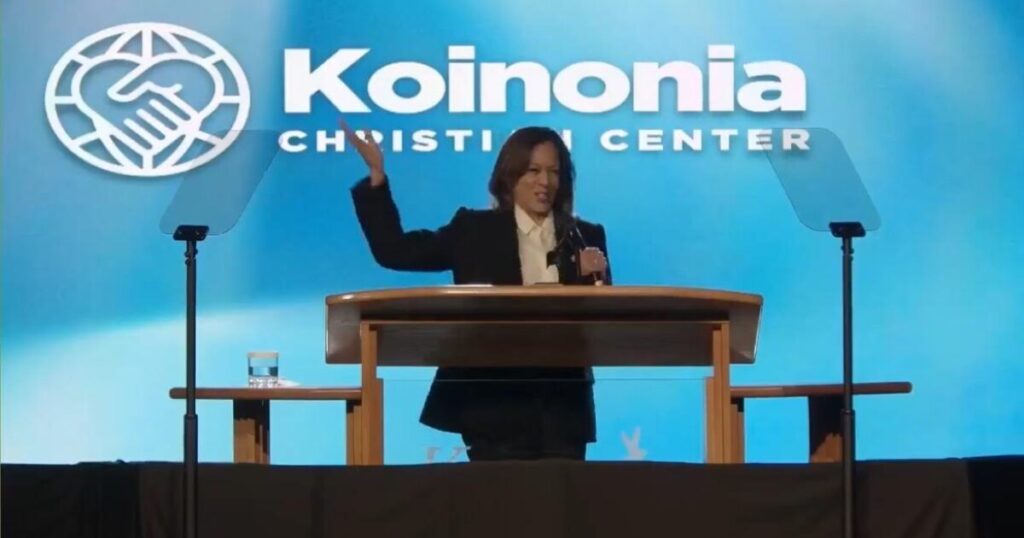On a recent Sunday, Vice President Kamala Harris visited the Koinonia Christian Center in Greenville, North Carolina, as part of her campaign outreach known as “Souls to the Polls.” Her visit aimed to galvanize the Black community ahead of elections, but it also sparked controversy due to her rhetorical style and message. During her address, Harris specifically targeted former President Donald Trump, accusing him of spreading misinformation and dishonesty that undermines community trust and hinders relief efforts, particularly in the context of her responses to recent hurricanes. This strong critique was intertwined with a clear call for unity and collaboration within the community.
Harris articulated concerns about certain individuals and groups who allegedly “lie about people who are working hard to help” those in need, suggesting that this disinformation was detrimental to efforts designed to offer assistance. Amid this discourse, she emphasized the emotional weight of mistrust, particularly for marginalized communities who might feel thwarted in their attempts to seek help. Her remarks aimed not only to highlight the challenges of misinformation but also the broader implications such narratives have on community engagement and public health outreach.
In a rather theatrical turn during her speech, Harris adopted a fake Southern accent, quipping, “Joy cometh in the mornin!” This element of her performance drew mixed reactions from attendees and observers, some of whom criticized it as disingenuous pandering to the audience. Critics and supporters alike noted that such stylistic choices might alienate some voters, raising questions about her authenticity and connections to the community she aims to serve.
Moreover, the speech included more abstract comments, such as, “What we see is so hard to see that we lose faith or a vision of those things we cannot see but must know.” This “word salad” moment, as it has been characterized, seemingly aimed at encouraging resilience and hope amidst adversity. However, the vagueness of such statements has left some questioning her ability to communicate effectively and connect meaningfully with her audience. Overall, her message could be interpreted as a blend of motivational rhetoric and political strategy aimed at fostering engagement ahead of the polls.
The backlash against Harris’s appearance illustrates a growing impatience among some voters for substantive engagement rather than performative gestures. Critics argue that rather than delivering concrete solutions or a clear vision, Harris’s approach often leans towards theatricality, which can detract from the pressing issues at hand. The important question is whether such tactics reinforce or undermine trust within the communities she seeks to rally.
In summary, Kamala Harris’s visit to the North Carolina church was emblematic of the complex dynamics of modern political campaigning, particularly within diverse communities. While she intended to bolster support through direct engagement, her delivery, including accusations against Trump and attempts at cultural connection, drew scrutiny. The challenge ahead for Harris and her team lies in striking a balance between inspirational messaging and actionable solutions that resonate with voters—not only on election day but also in addressing the long-standing issues faced by the communities they represent.

